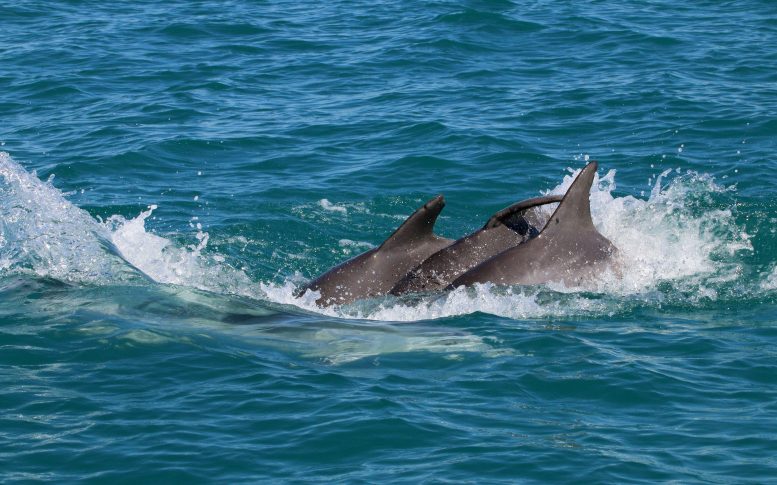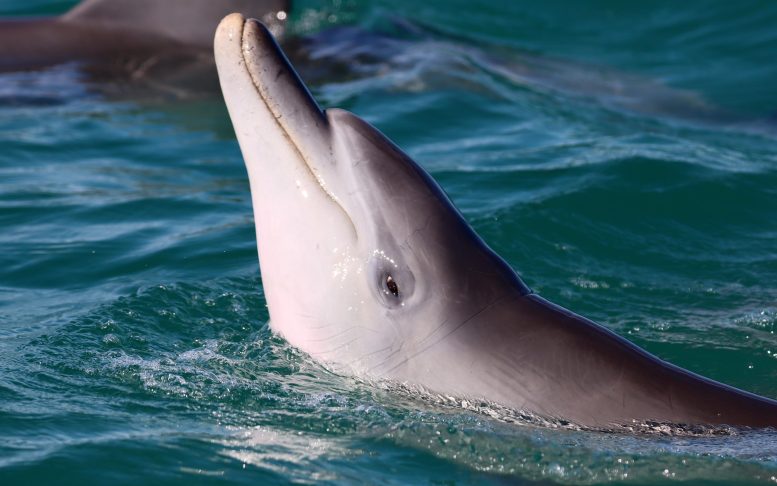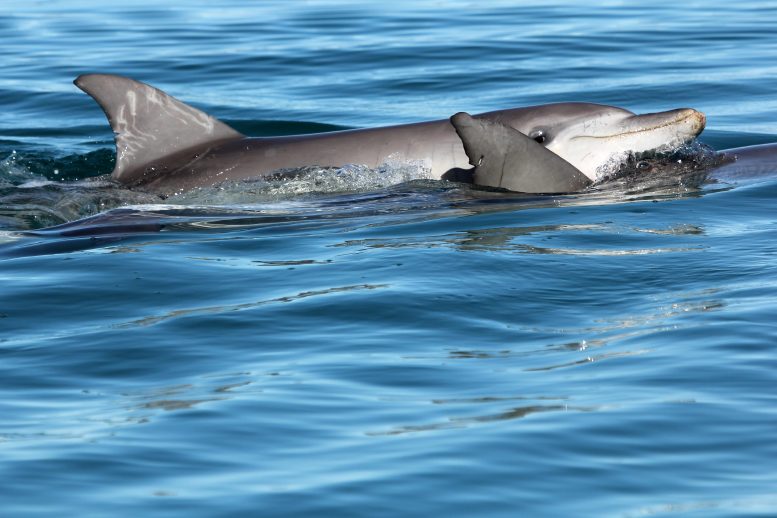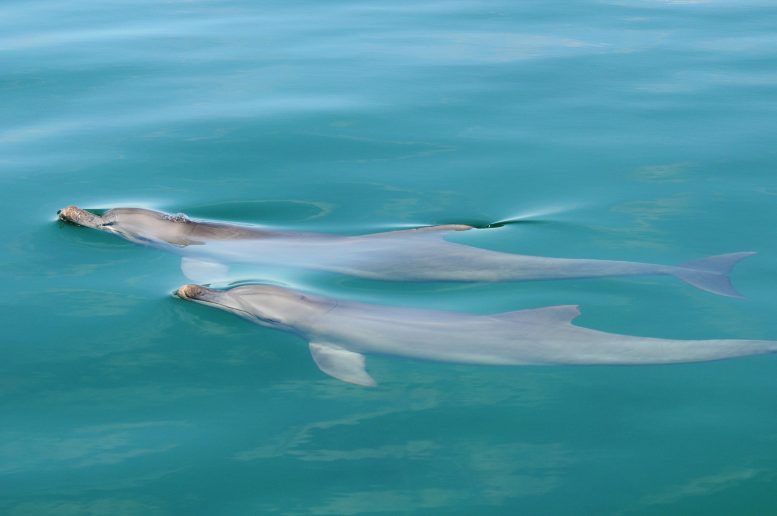A study indicates that the social play of juvenile male bottlenose dolphins predicts their future reproductive success.
Fresh findings published today (June 10) in Proceedings of the National Academy of Sciences (PNAS) led by researchers from the University of Bristol and University of Western Australia, show that juvenile male dolphins with strong social bonds practice adult-like reproductive behaviors when playing together, and those juvenile males who spend more time practicing will father more offspring as adults. The study provides rare evidence for a link between juvenile social play and reproductive success in a wild animal.
In collaboration with international colleagues, the scientists spent years observing the behavior of juvenile male Indo-Pacific bottlenose dolphins in Shark Bay, Western Australia, and using long-term behavioral and genetic data from this population, they investigated the role of juvenile social play in developing adult male reproductive behavior.
Lead author Dr. Katy Holmes, who completed this work as part of her doctoral research at the University of Western Australia, said: “We found that juvenile play involves immature versions of adult reproductive behaviors that are crucial for males to access and mate with estrous females, and the time spent doing these play behaviors predicts how many offspring males eventually sire as adults.”
Adult male dolphins in Shark Bay form long-term alliances to help each other secure access to females and these alliances are formed between males who were closely bonded as juveniles. As adults, pairs or trios of allied males will coordinate their behavior to consort individual females, and this work shows that young males practice this coordination with their likely future allies, years before they become sexually mature. “Our work is exciting because historically it has been notoriously difficult to link play behavior to reproductive success, in this case, the number of sired offspring, in wild animals,” Holmes noted.
Senior author Dr. Stephanie King, Associate Professor from Bristol’s School of Biological Sciences added: “Play behavior is widespread in humans and other animals, but the reasons that animals play together have long remained a mystery. This study provides compelling support for the idea that animals in the wild play together to practice behaviors that will be important for them as adults, and that if they practice enough, they will be more successful as adults.”
Reference: “Juvenile social play predicts adult reproductive success in male bottlenose dolphins” by Kathryn G. Holmes, Michael Krützen, Amanda R. Ridley, Simon J. Allen, Richard C. Connor, Livia Gerber, Cindy Flaherty Stamm and Stephanie L. King, 10 June 2024, Proceedings of the National Academy of Sciences.
DOI: 10.1073/pnas.2305948121













Be the first to comment on "Splash Into Science: How Dolphin Play Predicts Future Success"